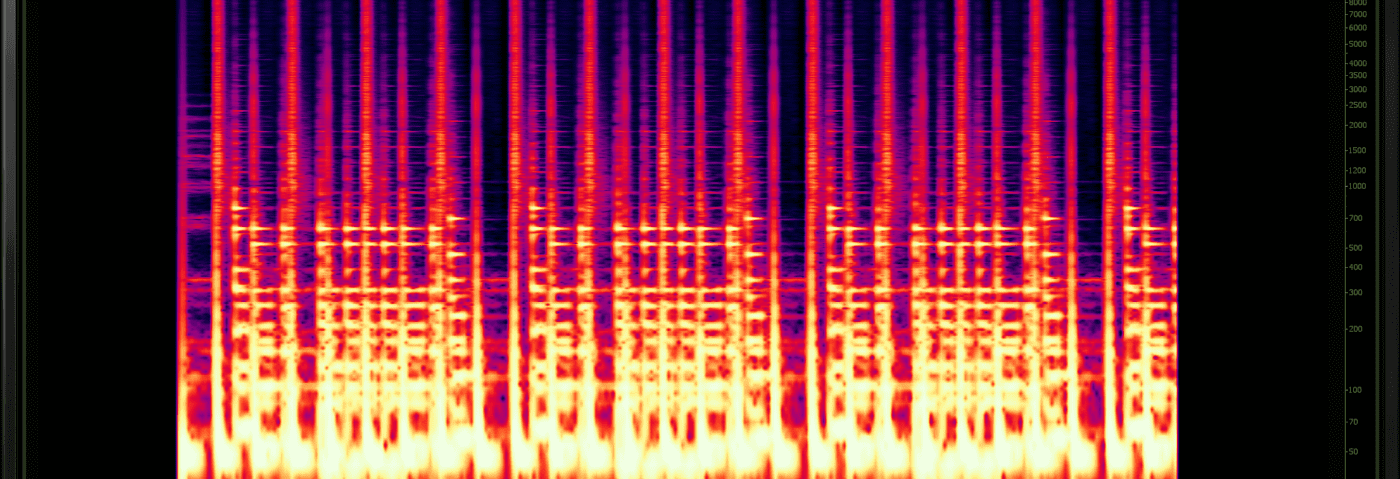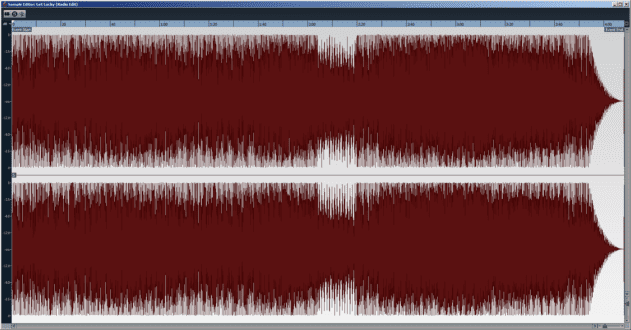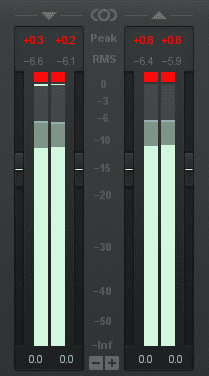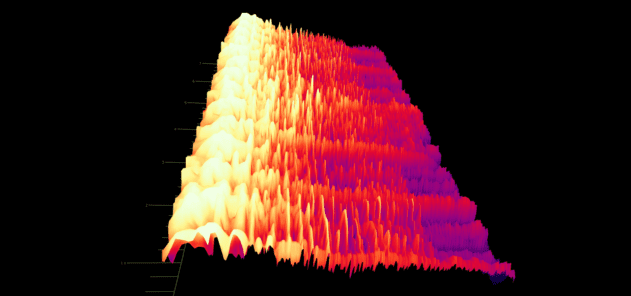‘Get Lucky’
A similar approach to arrangement is employed with very different end results throughout Daft Punk’s Random Access Memories. The album was promoted with a series of interviews in which the duo and their collaborators extolled the virtues of ‘real instruments’, vintage recording hardware and old-school production values.
If we take, for example, ‘Get Lucky’, elements of that vintage disco aesthetic are prominent throughout, right down to Nile Rodgers on guitar:
However, that only tells half the story. The waveform display reveals a mix far less dense than the Skrillex example earlier, but one that has still been been limited during mixing or mastering:
In fact, we can see by using a True Peak detector that the mix is still pretty hot even by contemporary standards. It’s theoretically going over 0 dBFS, and the average level is only 6.5 dB below peak. This is still a very modern master:
The neatly compartmentalised arrangement of instruments and sounds across the frequency range means that ‘Get Lucky’ achieves the rare feat of combining dynamics with loudness. Despite the frequent abuse of brickwall limiting, it’s a worthwhile reminder that loudness and dynamics aren’t necessarily mutually exclusive.




08.49 AM
Damn, what an article. Great stuff Attack.
And now I really want to hear New for U mixed like a Skirllex track. I’ll whack it through Pro L later with +30 on the gain.
01.11 PM
I would just like to say that Big Fun has greater floor impact than Look Right Through :p (played at same subjective volume of course..)
02.45 PM
Excellent Article … useful.
09.34 PM
I just want a spectrogram.
04.03 PM
i think “scary monsters and nice sprites” would sound way better as a more dynamic mix, personally. *Shrugs
03.21 PM
useful indepth article, well done to the author.
12.15 PM
Two points –
1) One thing that bugs me about the mix of the more synthetic side of dance music is how hot the highs are. Spend an afternoon with 70s vinyl: pop, rock, jazz…
I know this is media-influenced but all the mixes roll the high ends off a lot – then you come to any more modern (90s+) techno or whatnot, and the closed hats are relatively screaming at you in the mix. Sometimes I wonder if this is because everyone’s lost their hearing.
2) As a DJ primarily I’ve noticed that over the past 5 years or so, more and more dancefloor music is mastered just to be loud. This plays havoc when metering and mixing older and newer tunes, especially if you like to mix cross-genre – imagine mixing that skrillex track into Andres (just ignore the cognitive dissonance about that one). The house track’s fader will be at say 80-90% max and the other track will be at 20%. Visual metering as an aid fails. You can make it work by ear, but even then if you’re mixing kind of loud, when you relisten in a better environment, the disparity is huge.
—
I’m very pro-mp3/digital audio, but at least when you’re vinyl only, the mastering variation among songs, wrt loudness is pretty constrained.
08.26 PM
Great article!
I remember New For U was released digitally on Derrick Mays cd of the We Love Detroit compilation. If I got a copy I’d like to compare the vinyl rip with the (probably processed) digital version like the author did with Good Life
01.21 PM
Want to mix better and be able to pinpoint problem frequencies by heart? Then Train Your Ears! https://www.trainyourears.com/mixlikeapro